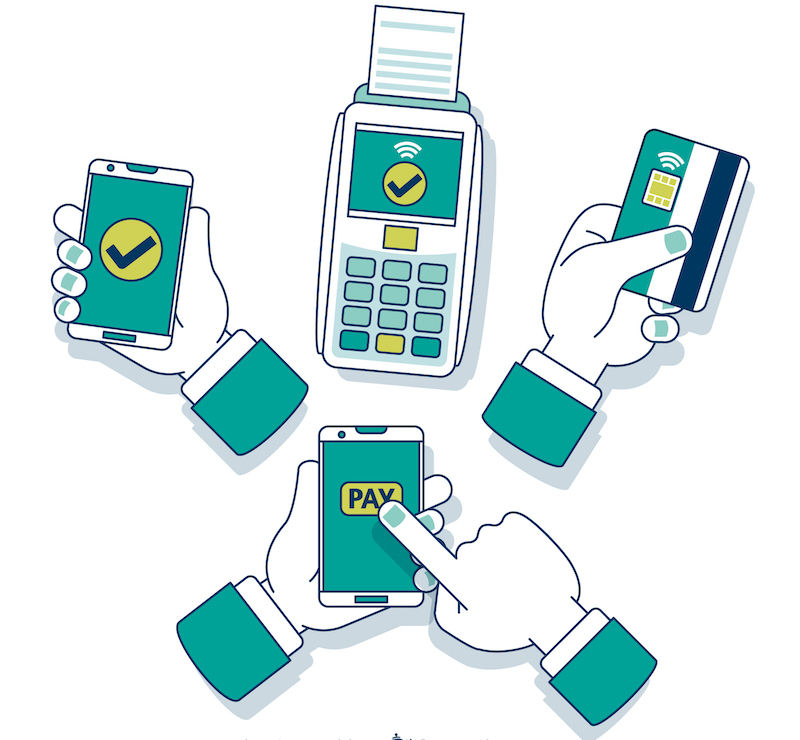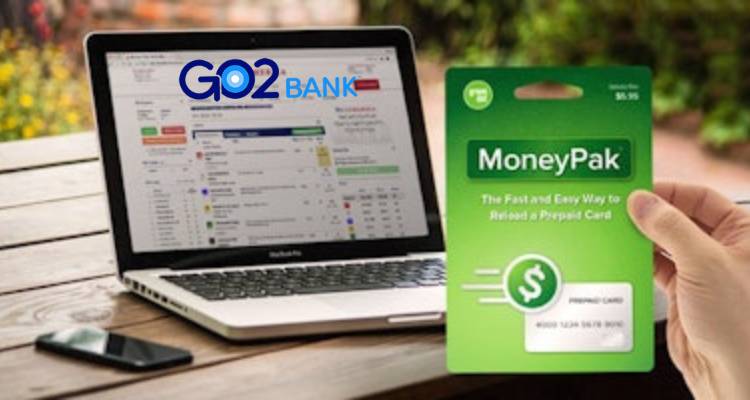Due to the notable rise in online trading and different services, there has evolved a mode of payment that suits the trading options. People have relied on cash payment for the longest time. Later, it was replaced by debit and credit cards.
The recent addition to the modes of payment basket was the online mode of payment. Enrolling for an electronic mode of payment shows that you are keeping up with marketing’s online trends. The online payment modes should be embraced, and mostly by business persons since they are more effective.
The best example of online payment processing systems is eCheck. It is a popular mode of electronic payment that people talk less about. Depending on where you are, it may turn out to be your best payment option. eCheck is a modern representation of the traditional paper check that facilitates fast and easy cash transfer from one bank account to the other. The payer can electronically transfer cash from his bank to that of the payee. This is made easier by a network referred to as the Automated Clearing House network (ACH) that constitutes multiple financial institutions.
ACH – eCheck Payment Processing
ACH is an acronym which stands for Automatic Clearing House. This is a financial network used by major US banks for payment processing. Any payment that includes an electronic transfer of money from one bank account to another using the ACH network is referred to as the ACH payment. These can include different payments such as a loan, rent, or a payment that includes a huge amount of cash.
The ACH network is a subsidy of the National Automated Clearing House Association (NACHA) founded in 1970. This was done to clear checks in a fast and more effective process within a country. The money is said to be sent from an Originating Depository Financial Institution (ODFI), which is the sender account. And Receiving Depository Financial Institution (RDFI) is the bank account that receives the money.
There is a verification step to curb abuse of this technology, so it is true to say that the system is secure. It ensures that no transfer of fraudulent funds. eCheck payment processing also protects your account from the use by unauthorized persons. It involves comparing whether the information given by the sender account about the client matches with what they have. The service also checks out on the bank history database to confirm if there has ever been a fraud case before associating the named accounts. If everything is clear, then they can let the transaction go through.
Features and Benefits of ACH
Secure Payments
The ACH systems are very secure: a verification process must be carried out before a transaction can occur to protect both the payee and the payer. The system screening also ensures that insufficient funds transfer is not possible.
Payment Scheduling
You can initiate timed billing for your customers through the ACH system. This means you can set the system to generate periodic invoices to your customers on a timely basis. It saves you time and cash as the system cannot forget like humans.
Reduced Employee Error and Fraud
The system counterchecks most of the parameters itself. Unlike humans, it doesn’t make errors. Additionally, it cross-examines account for prior fraudulent transactions. If any, the account may be barred from executing the transfer.
What this means is that you’ll need fewer employees to execute many tasks. The system will self-audit hence greatly cutting your employee wage bill.
Bulk Processing
You can initiate many ACH transactions at once if you have many orders. They will be processed within a short time hence maximum productivity.
Accept Check by Phone & Mail Orders
The system has unlimited virtual terminals that facilitate transaction authorization via phones or mail (MOTO). It’s, of course, a common feature with all check merchants.
- Cloud Reporting – ACH allows robust reporting using multiple data formats. You can easily track transactions right from initiation.
- Ecommerce – You have an opportunity to accept payments online, which hastens the payment process.
The Stages of eCheck Payment Processing
eCheck payment processing is so simple and transparent. These are the stages every transaction has to undergo before the recipient can access their funds.
- Authorization– This is the first stage in which the payee sends a request to the payer for payment processing. The payer has an option to accept or decline. There are two ways the payee can use to authorize payment through the default method, which is through the system. Here the payee can approve by just pressing an authorize button.
- The alternative is using an online form, a phone, or the contract. If via phone, the payee calls their customer to confirm the transaction. The contract can also be used as a confirmation for online payment.
- Processing – if the payer authorizes the transaction, the transfer process begins immediately. Unlike manual check processing, this step is practically virtual. The payee doesn’t have to give any detail of their accounts or the amount. All these are present in the solution.
- Verification–in this phase, the payment processor verifies the accuracy of the information given. The details, such as account and routing numbers, should be the same as those held by the bank. In case there is an error, the process will halt immediately. The confirmation process can either be manual or automatic in the system. Once everything is correct, this is when the funds’ transfer happens. The money is deducted from the payers account through the ACH system and sent to the payee’s account.
- Deposit – This is the final payment phase. Unlike others, the process may last a couple of days here. The funds are deposited into the payee’s account, and both parties are notified. The communication can be through an email, SMS, or an online receipt.
eCheck Payment Processing Security
eChecks are more secure than paper checks. One is due to the fact that the eChecks do not go through many hands like paper checks. Additionally, they are protected by consumer laws and regulations.
The other security features that protect the eChecks include the following;
- Authentication: This is a verification step in which the service merchants confirm the payer’s legitimacy and account information. This is done to ensure that fraudulent cash doesn’t find a way to accounts, which may compromise their operations. It also helps to curb online fraud and money laundering activities.
- Encryption: It is a security feature of scribbling the sensitive data to protect it against misuse even if it lands on the wrong hands. The scribbled data is rendered insensitive as it’s not readable in that form. For all ACH transactions, the encryption of data is a requirement, and that includes the eChecks.
- Public key cryptography: This is an encryption stage where the data is ciphered to render it human unreadable.
- Digital signature: Digital signature plus time stamp are encryption methods. They make sure that no fraudulent duplication of check transactions can occur while in progress.
- Certificate authorities: The CA award digital certificates such as SSL to certify the system’s security. Digital certificates confirm that the system is secure; hence transactions and communications can take place securely.
- Duplicate detection: It is an automatic fraud detection system that senses eCheck transaction duplications and other security breaches. If the system detects any suspicious activity, the transfer halts immediately and recommends the service provider’s security steps.
Advantages of eCheck Over Paper Checks
- eChecks eliminate the long and tedious process that a paper check goes through. The eCheck, which may be similar to paper check in terms of processing, the eCheck is far faster to complete the transaction than the traditional paper check. Check transacts the money in an online process, which is faster than waiting for a physical check of the paper check to complete a transaction.
- eChecks take four business days at most to clear compared to the paper checks that can take up to ten business days to complete a single payment. With eCheck, you don’t have to go to the bank every time you want to process a check. The business can actually go completely paperless, which brings more efficiency in the business operations.
- eCheck also helps greatly by allowing one to future proof of their payment system. Immediately after submitting your eCheck, the verification process begins. The recipient can know when the funds will be readily available.
- Due to efficiency and convenience, most people prefer the digital online payment of bills over the traditional use of paper checks. Most personalities would rather use the electronic mode to make transactions rather than carrying the checkbooks around. It is equally tiresome and inconveniencing.
- eChecks allow one to make payments without incurring debts.
FAQ – Frequently Asked Questions
How do electronic checks differ from paper checks?
eChecks are digital and not tangible, whereas the paper checks are papers, as the name suggests. There is a likelihood of paper checks becoming obsolete in the near future due to the increased adoption of eChecks by many consumers and other electronic payment modes.
What’s the difference between eChecks and credit card payments?
The major difference between eChecks and credit cards is that they rely on the ACH network. The credit card payments use card networks such as master cards, visas, etc. The use of ACH makes the eCheck payments cheaper than the credit cards. It makes a whole difference, especially in businesses that make huge recurring payments.
How do eChecks compare to EFT and wire transfer?
EFT means electronic funds transfer. This is a compound term covering various electronic payment modes eCheck, including wire transfer, PayPal local bank transfers, etc.
Wire transfers, on the other hand, involve money transfer from one bank account to another. Wire transfers are manual, whereas the ACH transfers are done in batches. For this reason, the wire transfers are more costly than the ACH transactions. Another differentiating factor is that unlike ACH transactions, wire transfers are irreversible.
Does eCheck acceptance help a business increase revenue?
Yes, it does. eChecks are a boost to any business. Once the payments have been automated, the cash flow will rarely stop since the account numbers will rarely change as credit card numbers do. This ensures that there is a constant flow of income from the customers. Even though this mode of payment suits any business, the best-suited ones are;
- Online-based businesses
- Businesses that run on a subscription
- Businesses that process large sums of payments.
- Online stores that selling goods to customer
What Types of Payments Can You Make with eChecks?
The best payments you can use with eChecks are those with bulk processing. Because they are cheap, you can rely on them for paying expensive items. Examples of the best payments include those for mortgages, legal fees, and rents.
How Long Does it Take to Clear and Process an eCheck?
The eCheck clearing time varies from provider to the other. Basically, the transaction verification takes place within 48 hours after initiation. If the amount the payee needs is available in the payer’s account, the transfer process takes between 3 to 5 working days. After that time, the funds will be available in the payee’s account.
What do I need to accept eChecks?
To accept eChecks, you need a payment processor, also known as a gateway, and a merchant that offers ACH transactions. Depending on how you want to accept the echecks, you’ll also be required to purchase the related software and hardware.
For instance, a business that needs to accept eChecks at a point of sale, a check scanner is necessary. If they want online check approvals, payment software is necessary.
Recap
If you haven’t incorporated an eCheck payment processing system in your business, this could be a better chance for you. Currently, many customers want a business that gives them a chance to pay their bills electronically. Also, giving your clients different modes of payments encourages them to spend more, which results in more returns for the business.
Before immersing yourself into the murky waters of eCheck payment processing, makes sure you conduct a thorough search on which merchant is best for you. You should also consult your bank for advice probably on the best merchant you should go for.
Ideally, using manual checking as your preferred method of payment is out date. Allowing your business to remain stuck in the past means that you lack the competitive edge against your competitors. To compete favorably, consider evolving with technology and the trends in the business world.





